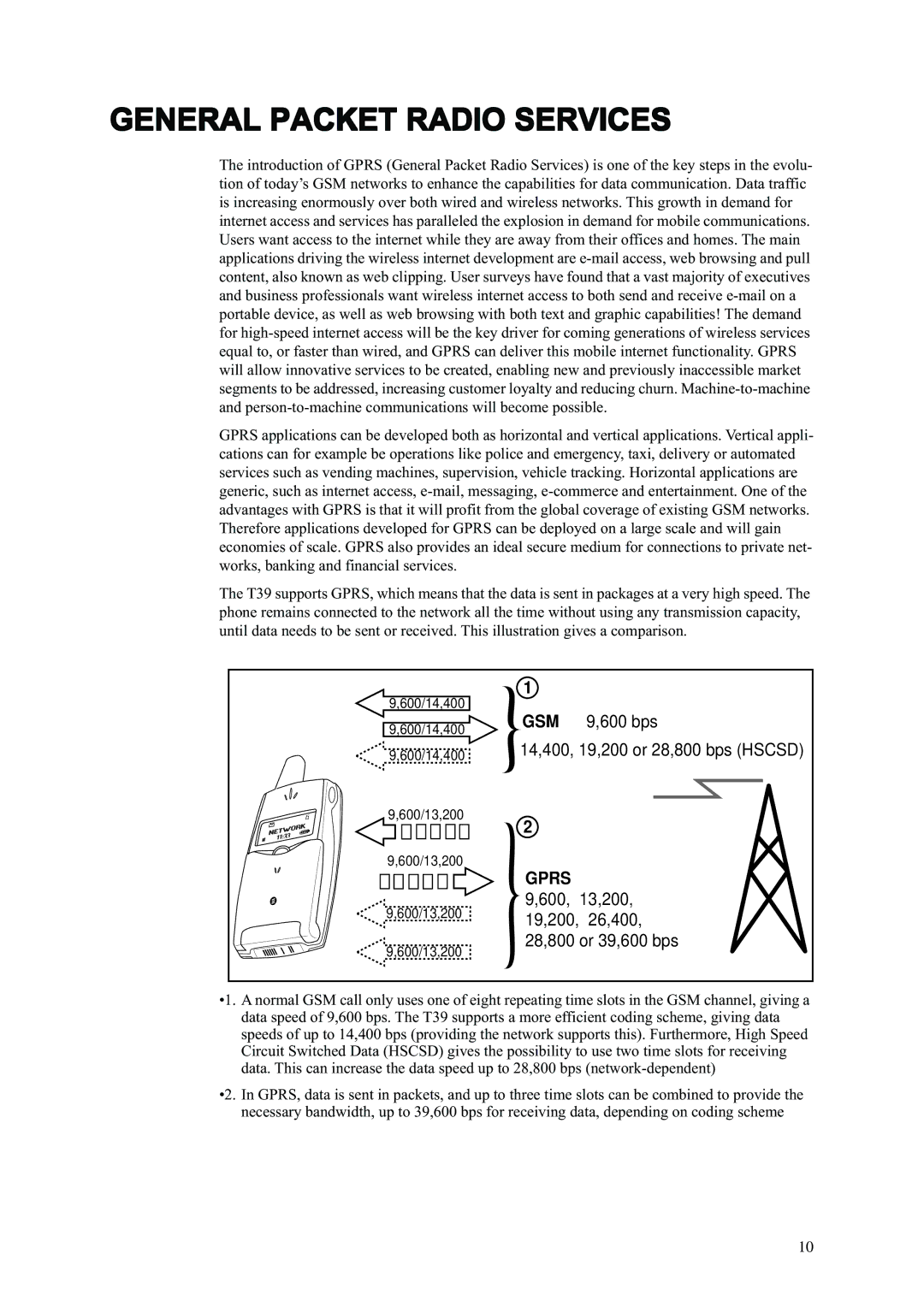
GENERAL PACKET RADIO SERVICES
The introduction of GPRS (General Packet Radio Services) is one of the key steps in the evolu- tion of today’s GSM networks to enhance the capabilities for data communication. Data traffic is increasing enormously over both wired and wireless networks. This growth in demand for internet access and services has paralleled the explosion in demand for mobile communications. Users want access to the internet while they are away from their offices and homes. The main applications driving the wireless internet development are
GPRS applications can be developed both as horizontal and vertical applications. Vertical appli- cations can for example be operations like police and emergency, taxi, delivery or automated services such as vending machines, supervision, vehicle tracking. Horizontal applications are generic, such as internet access,
The T39 supports GPRS, which means that the data is sent in packages at a very high speed. The phone remains connected to the network all the time without using any transmission capacity, until data needs to be sent or received. This illustration gives a comparison.
1
9,600/14,400
9,600/14,400
9,600/14,400
9,600/13,200
9,600/13,200
9,600/13,200
9,600/13,200
GSM 9,600 bps
14,400, 19,200 or 28,800 bps (HSCSD)
2
GPRS
9,600, 13,200, 19,200, 26,400, 28,800 or 39,600 bps
•1. A normal GSM call only uses one of eight repeating time slots in the GSM channel, giving a data speed of 9,600 bps. The T39 supports a more efficient coding scheme, giving data speeds of up to 14,400 bps (providing the network supports this). Furthermore, High Speed Circuit Switched Data (HSCSD) gives the possibility to use two time slots for receiving data. This can increase the data speed up to 28,800 bps
•2. In GPRS, data is sent in packets, and up to three time slots can be combined to provide the necessary bandwidth, up to 39,600 bps for receiving data, depending on coding scheme
10
